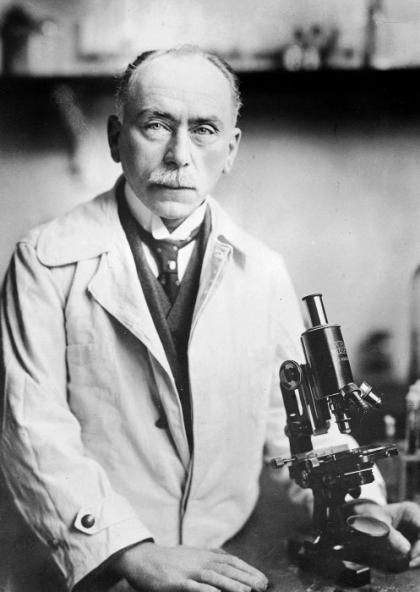 "For his discoveries relating to immunity."
"For his discoveries relating to immunity."

In 1894 Jules Bordet joined the laboratory of Ilya Mechnikov under a grant from the Belgian government. He worked there until 1901.
From 1895 to 1896 he investigated the mechanisms of bacterial agglutination and destruction (bacteriolysis) by immune serum and thus underlined the role of humoral immunity in antimicrobial defense processes. He showed that bacteriolysis results from the combined action of two factors in blood serum: complement, a non-specific heat-labile factor initially called "alexin", and a specific heat-stable or sensitizing factor (the "antibodies") so called because it sensitizes the microbe to the bacteriolytic action of the alexin. He also showed that agglutination preceding lysis is due to the antibody and does not involve the complement. As early as 1895 he therefore clarified the bacterial destruction mechanism in vaccinated individuals.
Thanks to this discovery, during the same year he established the principle of in vitro serodiagnostic methods - i.e. diagnosing patients using a serum assay. This principle was subsequently used to diagnose the majority of infectious diseases.
In 1898, he expanded our knowledge of immunology further by showing that an organism can become immune not only to microbes, but also to cells from foreign animal species via the same mechanism. Like anti-infectious immunity, the immunity thus acquired is specific, meaning that it can distinguish between the cells of the various animal species. It was thus established that the diversity of animal species is reflected in the diversity of their cellular structure. This fundamental concept may be considered to be behind the discovery of blood groups and the phenomenon of graft rejection later on. In 1900 he described the complement-fixation reaction. In 1906 this led to the widely used serum diagnosis test for syphilis developed by Wassermann, hence the name Bordet-Wassermann reaction. Jules Bordet was awarded the Nobel Prize in Physiology or Medicine in 1919.



